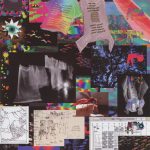Carol Lafayette, Karen Hillier, Bill Jenks, Mary Saslow, Amy Tucker: After the Hunt
Artist(s):
Title:
- After the Hunt
Exhibition:
Creation Year:
- 2002
Medium:
- Interactive Installation
Category:
Keywords:
Artist Statement:
We carpet the landscape in herds, swarms, flocks, and schools, shaping air currents and vibrating to different rhythms. Our paths are a kaleidoscopic fabric. Only humans need veiling, separation from other living things, elements, each other. We pattern our veils with designs from nature and language.
These fragilities are memories of who we’ve known and who we’ve been: a baby’s blanket, dresses a father bought for his daughters. On them play shadows of trees, saturated patterns, flocks of birds, creatures of earth and sea-escaping canvas, monitor, and screen, curving over fold, moving to whispers and wind.
Being sent to hang clothes to dry was a dreaded chore. The heat of the Texas sun was mirrored by its white-hot glare on billowing linens. I felt a closeness to my father pinning up his handkerchiefs and socks. The indifference to my sister could be intensely felt and go unwitnessed, as I was careful not to stretch her elastic waistbands.
rippled colors / draw my passing / retold for yours / upon this veil that separates / always / trapped within / that skin in / which i was within / this veil on which / shadows / and / your dreams appear / your hard swift arrow / smooth and straight / for all that bound / in blood red bleed / are kin to me / we / cannot / be / set free
Technical Information:
After the Hunt is an interactive installation. On zigzagging clotheslines, stylized translucent garments become video screens. The clothing evokes memories-day-of-the-week underwear, a pocket handkerchief, a fancy apron. Viewers move beneath the lines amid sound and air currents initiated by their presence. An interactive system permits viewers to influence the images that play across the swaying clothing. Visitors hear whispered prose they can almost, but not quite, recognize. The surface of the clothing constantly morphs from vivid colors to nearly indiscernible shadows.
After the Hunt is composed of intersecting lines of clothing strung across an overhead area, data projectors that display QuickTime videos and animations onto the fabric, a support station that houses process documents and hardware, and an interactive station containing a motion sensor.
The installation makes use of Max/MSP 4.0 software, a graphical programming environment by Miller Puckette and David Zicarelli that generates functions for the Musical Instrument Digital Interface (MIDI). Integration of QuickTime media into Max is accomplished with Nato.0+55+3d Modular by Netochka Nezvanova. Infusion Systems ICube translates sensor impulses into MIDI data. Data is received and interpreted by Max and Nata.
Affiliation Where Artwork Was Created:
- Texas A&M University






